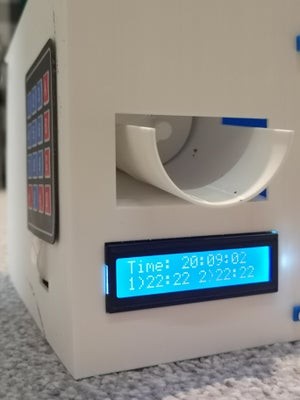Stepper motors are widely used in various industries and applications, owing to their precision and accuracy. They are known for their ability to rotate in small and precise steps, making them an ideal choice for controlling various mechanical systems. Stepper motors work by energizing the coils in a specific sequence that determines the rotor's position.

In this article, we will focus on Stepper Motor Phase, which is a critical aspect of stepper motor operation. We will discuss what stepper motor phases are, how they work, and their importance in stepper motor design and operation.
What are Stepper Motor Phases?
Stepper motor phases refer to the organization of the coils that generate the magnetic fields responsible for the motor's rotation. The coils are typically arranged around the motor's rotor, either in a bipolar or unipolar configuration, depending on the motor's design. The number of coils and the arrangement vary depending on the motor's size, intended application and other design factors.
For example, a typical stepper motor has four phases, arranged in a bipolar configuration, with two coils per phase. Each phase is energized in a specific sequence to produce a rotating magnetic field that moves the rotor in small, precise steps.
How Do Stepper Motor Phases Work?
Stepper motor phases work by energizing the coils in a specific sequence, creating a magnetic field that interacts with the rotor's magnets. The magnetic field attracts or repels the rotor's magnets, depending on the polarity, causing the rotor to move in a specific direction. The speed and direction of the rotor's movement are determined by the sequence and timing of the phase energization.
The sequence and timing of the phase energization are controlled by a driver circuit that receives signals from a microcontroller or other control system. The driver circuit energizes each phase in turn, applying a voltage to the appropriate coil. The voltage polarity determines the direction of the current flow and, therefore, the direction of the magnetic field.
The driver circuit monitors the rotor's position using feedback sensors, such as encoders or Hall effect sensors, and adjusts the phase energization sequence and timing to maintain accuracy and precision.
Why Are Stepper Motor Phases Important?
Stepper motor phases are critical to stepper motor operation because they determine the motor's behavior and response to control signals. The sequence and timing of the phase energization must be precise to produce accurate and repeatable movement.
Stepper motors are also highly versatile and can be configured to operate in a variety of modes, such as full-step, half-step, microstepping, and others. The mode of operation affects the sequence and timing of the phase energization, so it is essential to understand the motor's design and intended application to select the appropriate mode of operation.
Conclusion
Stepper motors are an essential component of many mechanical systems, and stepper motor phase is a crucial factor in their design and operation. Understanding the role of stepper motor phases in creating precise and accurate movement is essential for selecting the right motor for an application and optimizing its operation.
In summary, stepper motor phases are the organization of the coils used to generate the magnetic fields that interact with the rotor's magnets to create motion. The sequence and timing of the phase energization must be precise to produce accurate and repeatable movement. Stepper motors can be configured to operate in various modes, affecting the phase energization sequence and timing. Therefore, it is crucial to understand the motor's design and intended application to select the best mode of operation.